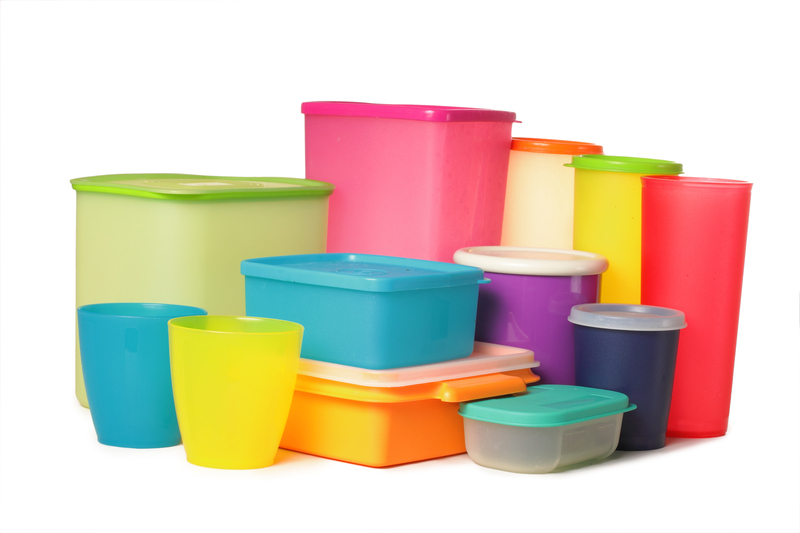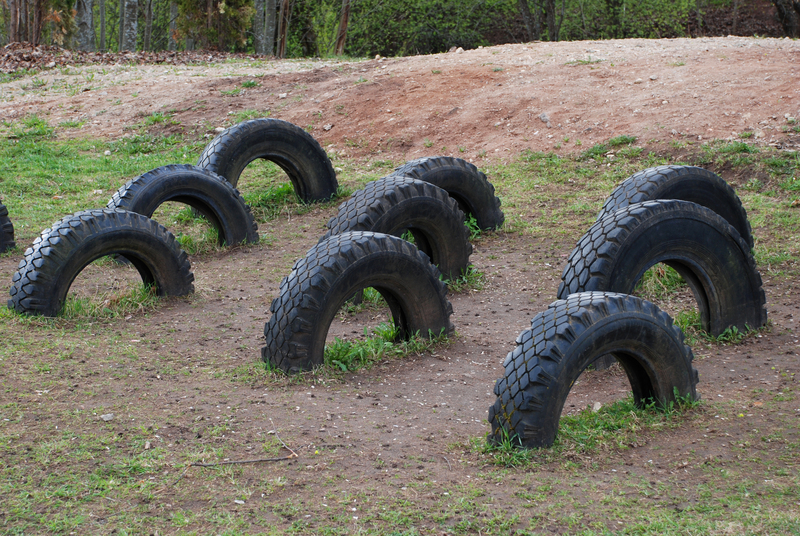Solutions for Overwhelming Clutter and Hoarding Challenges
Are you struggling with cluttered spaces or confronting hoarding challenges at home or in your workplace? If so, you are not alone. Many individuals and families battle with overwhelming clutter that disrupts daily living, hampers productivity, and even threatens health and safety. Addressing the root causes of excessive clutter and finding realistic solutions to hoarding can transform your environment and radically improve your quality of life. This comprehensive guide will explore effective strategies, professional insights, and sustainable solutions for managing overwhelming clutter and hoarding behaviors.
Understanding the Difference: Clutter vs. Hoarding
Before diving into solutions, it's crucial to distinguish between general clutter and hoarding disorder.
- Clutter is often the accumulation of items that may no longer serve a purpose, leading to disorganized and cramped living or working spaces. Clutter can typically be managed with basic organizational techniques and the right motivation.
- Hoarding disorder is a more serious psychological condition characterized by an ongoing difficulty discarding possessions, regardless of value. Hoarding can cause dangerous living conditions, strained relationships, and emotional distress.
Understanding these differences is essential in selecting the right approach and solutions for your situation.

Main Causes Behind Overwhelming Clutter and Hoarding
- Emotional Attachments: Items may represent memories, comfort, or security, making it hard to let go.
- Decision Fatigue: Overwhelm sets in when faced with too many choices about what to keep or discard.
- Fear of Needing Items: Worrying that an item might be useful in the future is a common rationalization for keeping unnecessary things.
- Mental Health Issues: Anxiety, depression, and trauma can exacerbate both clutter and hoarding behaviors.
- Lack of Organization: Limited time, space, or resources can lead to the gradual build-up of possessions.
Recognizing which factors influence your own or a loved one's clutter challenges is the first step toward finding tailored solutions.
Step-by-Step Solutions for Overcoming Clutter and Hoarding Challenges
1. Start With a Nonjudgmental Assessment
Before diving into action, assess your environment objectively. Walk through your spaces and take note of clutter hot spots. Ask yourself:
- Which rooms or areas feel most overwhelming?
- Are there clear pathways, or is movement restricted?
- Are essential items easily accessible?
*Take photographs* of each area to establish a baseline for future progress.
2. Set Realistic, Attainable Goals
Tackling an entire home or workspace in one go is unrealistic and can demotivate. Instead, set small, specific targets:
- Organize one shelf, one drawer, or one corner per session.
- Schedule short, regular declutter times--for example, 15 minutes per day.
- Commit to removing a specific number of items daily or weekly.
Celebrating small victories will build momentum and confidence.
3. Declutter the Easy Stuff First
Start with items that hold little emotional significance and are clearly unnecessary:
- Broken objects that can't be repaired
- Expired food, medications, and beauty products
- Duplicate items (old cables, mismatched kitchenware, etc.)
Seeing quick progress can often motivate continued action toward bigger challenges.
4. Adopt the "One In, One Out" Rule
Prevent future clutter by committing to removing one item for every new item acquired. This sustainable habit keeps possessions in check.
5. Organize by Category, Not Location
It's often more effective to gather and sort similar items together, rather than tidying one area at a time. For example, collect all books in the house, evaluate, and sort them at once. This approach reveals the full extent of your belongings and identifies what can be let go.
6. Understand and Address Emotional Attachments
Emotional resistance is a significant hurdle in both clutter and hoarding situations. Try these strategies:
- Take photos of sentimental items before letting go.
- Keep only the most meaningful mementos and display them.
- Remind yourself or your loved one of the main goal: a safe, peaceful, and functional living space.
7. Involve a Trusted Support System
You don't have to do this alone. Friends, family, or professional organizers can provide emotional support and practical help. For those facing hoarding disorder, involving a mental health professional is vital.
8. Use Practical Storage and Organization Tools
The right storage solutions help maintain decluttered spaces. Consider:
- Clear, stackable bins for visibility and accessibility
- Labels for bins, drawers, and shelves
- Vertical storage (shelves, hooks, over-the-door organizers)
- Furniture with built-in storage
Tip: Avoid buying more containers until you've actually reduced the number of items to store!
Professional Solutions for Hoarding Disorder
When Clutter Becomes a Serious Hoarding Challenge
- Cognitive Behavioral Therapy (CBT): Specially tailored CBT for hoarding can help individuals recognize problematic beliefs about possessions and slowly learn to part with them.
- Professional Organizers Trained in Hoarding: These experts use nonjudgmental and gradual methods to help individuals manage belongings.
- Support Groups: Groups like Hoarding Cleanup or Clutterers Anonymous offer community support and accountability.
- Coordination With Medical and Mental Health Professionals: Doctors, therapists, and social workers may be necessary for severe cases where health or safety is at risk.
- Legal and Housing Services: In some situations, city agencies or landlords may be involved to address code violations or eviction threats. Supportive advocacy can help prevent displacement and trauma.
Safety First: Addressing Biohazards and Fire Risks
Hoarding poses major safety risks, including fire hazards, pest infestations, and structural damage. If you or someone you care about faces such conditions:
- Contact local public health or fire departments for guidance.
- Hire specialized cleaning services that can safely remove biohazards or contaminants.
- Ensure clear exit routes in case of emergency and install working smoke detectors.
Maintaining a Clutter-Free Future
Whether you are overcoming ordinary clutter or living with hoarding disorder, the true test is maintaining your progress. Here's how:
- Routine Checkups: Schedule regular "clutter patrols"--monthly or seasonally, to prevent items from accumulating.
- Mindful Purchases: Pause before buying. Ask if you truly need the item and where it will live in your space.
- Designate a Donation Box: Keep a bin or bag in a closet for items you no longer use. Donate or discard when full.
- Involve the Household: Make maintenance a team effort--establish clear roles, shared rules, and regular reminders.
- Continued Emotional Support: Recognize that setbacks may occur, especially with underlying mental health issues. Reach out for ongoing support or therapy as needed.
Helpful Resources for Overcoming Hoarding and Clutter Challenges
Several organizations and resources provide invaluable support for those tackling overwhelming clutter challenges:
- International OCD Foundation Hoarding Center
- National Institute of Mental Health: Hoarding Disorder
- Children of Hoarders
- American Psychological Association: Hoarding

Frequently Asked Questions (FAQ) About Decluttering and Hoarding
-
How do I start if I feel emotionally paralyzed by clutter?
Start small. Choose one manageable space and set a timer for 10-15 minutes. Focus only on discarding obvious trash or broken items. You may also benefit from enlisting a supportive friend or mental health professional to help you process emotions.
-
Is there a link between trauma and hoarding?
Yes, traumatic experiences such as loss, abuse, or significant life changes are often present in those with hoarding disorder. The urge to accumulate items can be an attempt to regain control or comfort. Addressing trauma through therapy is often beneficial.
-
What are the health risks of severe clutter or hoarding?
Risks include fire hazards, falls, pest infestations, respiratory issues from dust or mold, and social isolation. Severe cases rent spaces uninhabitable, highlighting the need for urgent intervention.
-
How can I help a loved one struggling with hoarding disorder?
Approach conversations without judgment. Offer to support them in seeking professional help -- do not attempt forced cleanouts, as this can worsen distress. Educate yourself about hoarding to increase your understanding and empathy.
-
What if the clutter is caused by physical limitations?
Physical disabilities can make cleaning and organizing difficult. Adaptive tools, professional organizers, and local volunteer or social service programs may offer hands-on help.
In Summary: You Can Conquer Clutter and Hoarding Challenges
Overwhelming clutter and hoarding problems are daunting, but not insurmountable. With self-compassion, actionable steps, and the right support, you can reclaim control of your space and your well-being. Remember, lasting change occurs through consistent small actions, and it's never too late to seek help. Whether you enlist a professional or lean on loved ones, embracing these solutions for hoarding challenges and clutter reduction will lay the groundwork for a brighter, healthier future.
Don't wait for "the perfect time" to start your journey. Begin today, and take back your space--one step at a time.
```